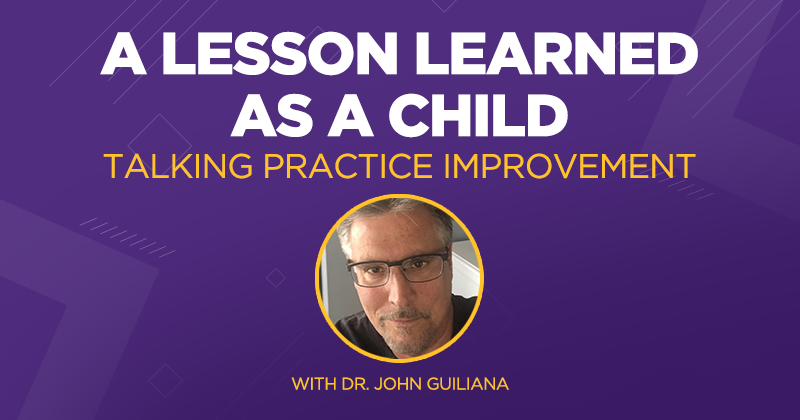A Lesson Learned as a Child

By John V. Guiliana, DPM, MS
When I was a young boy growing up in New Jersey, my dad had a habit of teaching me how to think critically through the use of stories and riddles. Here’s a riddle that not only brings back lots of memories but hopefully helps you reset how you think through financial accounting and costs.
Three men walk into a hotel. The front desk clerk tells them that the room they will share will cost $30 (remember, this was back in the early 60s). This means that they each would pay $10.
After the men went to their room, the front desk clerk realized that he overcharged them and gave the bellhop $5 to bring back to the men. On the way up to the room, the bellhop realized that $5 is not equally divisible between three men, so he decided to pocket $2 and gave the men $3 to split equally between them.
That now means that each man paid $9 for the room and not $10. Well, if we multiply $9 times three men, that comes to $27. Add the $2 that the bellhop kept and that would amount to $29. What happened to the other dollar of the original $30?
A riddle like this forces us to think critically about how we contemplate costs. It’s easy to fall into an accounting trap and become aloof to the reality of true costs.
In economics, a “cost breakdown analysis” itemizes the cost of a product or service and breaks it down into its component parts known as “cost drivers.” Some of the most interesting management projects that I’ve worked on entailed a cost breakdown analysis and demonstrated to the physician what the true cost associated with various processes within a medical practice amounts to. It requires each vital business process to be broken down into cost-per-time units (usually dollars per minute).
In a previous blog, I wrote about the price of a product/service versus the cost and value. While the price of something is expressed in dollars, it’s often human nature to fail to appreciate the product’s effect on a process’s cost and value, such as patient experience. A perfect example of this cost reduction and value add can be experienced when a business adopts a technology that automates many labor-intensive processes.
Award-winning ModMed® Podiatry* could help bring automation tools to your practice that could help you become more streamlined and efficient. With adaptive learning and AI, ModMed Podiatry assists in charting, billing, coding (including selection of the proper E/M level code and modifiers), recall, incorporation of pictures, dictation, and many more tasks that could help you and your staff stay focused on patient care.
So when contemplating a technology improvement, don’t confuse price, cost and value. And if you find yourself losing sleep over my childhood riddle and need help, our team of dedicated podiatry specialists can help you understand the riddle’s mathematical misdirection flaw, as well as provide you with a demo that I think you’ll find most impressive!
This blog is intended for informational purposes only and does not constitute legal or medical advice. Please consult with your legal counsel and other qualified advisors to ensure compliance with applicable laws, regulations and standards.
* Black Book 2022™





